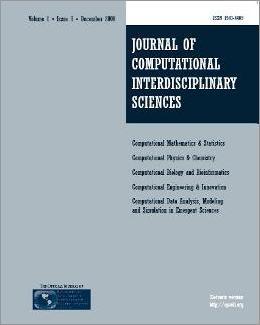
Editorial Office:
Management:
R. S. Oyarzabal
Technical Support:
D. H. Diaz
M. A. Gomez
W. Abrahão
G. Oliveira
Publisher by Knobook Pub


Editorial Office:
Management:
R. S. Oyarzabal
Technical Support:
D. H. Diaz
M. A. Gomez
W. Abrahão
G. Oliveira
Publisher by Knobook Pub
doi: 10.6062/jcis.2012.03.03.0062
A. Lobo Gomes et. al.
The Small Magellanic Cloud (SMC) and the Large Magellanic Cloud (LMC) are irregular galaxies orbiting the Milky Way. It is be lieved that the Magellanic Bridge, a structure linking SMC and LMC, was formed due to the interaction between the Clouds. The aim of this work is to study the magnetic field structure at the Northeast and the Wing sections of the SMC and at the Magellanic Bridge. For this purpose we have used optical polarimetric data and constructed a polarization map in order to trace the sky-projected magnetic field component. Furthermore, we are using MHD simulations to investigate the role of the magnetic field on the interaction of these galaxies and how it may have influenced the formation of the Magellanic Bridge and preliminary results of these numerical studies are also shown.
Magellanic Clouds: Small Magellanic Cloud, Magellanic Bridge; ISM: magnetic fields; techniques: optical polarimetry; simulations: MHD simulations.
[1] Bekki, K, 2009. Models for the dynamical evolution of the Magellanic System, IAUS 256: 105-116.
[2] Hindman, JV, Kerr, FJ, McGee, RX, 1963. A Low Resolution Hydrogen-line Survey of the Magellanic System. II. Interpretation of Results, Australian Journal of Physics 16: 570-+.
[3] Irwin, MJ, Kunkel, WE, Demers, S, 1985. A blue stellar population in the H I bridge between the two Magellanic Clouds, Nature 318: 160-+.
[4] Bekki, K., Chiba, M, 2005. Formation and evolution of the Magellanic Clouds - I. Origin of structural, kinematic and chemical properties of the Large Magellanic Cloud, MNRAS 356: 680-702.
[5] Westerlund, BE, 1991. Review: an Overview of the Structure and Kinematics of the Magellanic Clouds, IAUS 148: 15-+.
[6] Muller, E, Bekki, K, 2007. The origin of large-scale HI structures in the Magellanic Bridge, MNRAS 381: L11-L15.
[7] Gardiner, LT, Noguchi, M, 1996. N-body simulations of the Small Magellanic Cloud and the Magellanic Stream, MNRAS 278: 191-208.
[8] Murai, T, Fujimoto, M, 1980. The Magellanic Stream and the Galaxy with a Massive Halo, PASJ 32: 581-+.
[9] Mao, SA, Gaensler, BM, Stanimirovi ́c, S, Haverkorn, McClure-Griffiths, NM, Staveley-Smith, L, Dickey, JM, 2008. A Radio and Optical Polarization Study of the Magnetic Field in the Small Magellanic Cloud, ApJ 688: 1029-1049.
[10] Zweibel, EG, Heiles, C, 1997. Magnetic fields in galaxies and beyond, Nature 385: 131-136.
[11] Magalh ̃aes, AM, Gomes, AL, Vidotto, AA, Rodrigues, Pereyra, A, Wisniewski, J, Bjorkman, K, Bjorkman, J, Meade,M, Babler, BL, 2009. The magnetic field structure of the Small Magellanic Cloud, IAUS 256: 178-183.
[12] Magalh ̃aes, AM, Loiseau, N, Rodrigues, CV, Piirola, V, Magnetic field structure in the Small Magellanic Cloud, IAUS 140: 255-+.
[13] Schmidt, T, 1976. Starlight polarization in the Magellanic Cloud regions, A&AS 24: 357-378.
[14] Mathewson, DS, Ford, VL, 1970. The Magnetic-Field Structure of the Magellanic Clouds, ApJL 160: L43+.
[15] Rodrigues, CV, Magalh ̃aes, AM, Coyne, GV, Piirola, V, Dust in the Small Magellanic Cloud: Interstellar Polarization and Extinction, ApJ 485: 618-+.
[16] Kowal, G, Lazarian, A, Beresnyak, A, 2007. Density Fluctuations in MHD Turbulence: Spectra, Intermittency, and Topology, ApJ 658: 423-445.
[17] Piatek, S, Pryor, C, Olszewski, EW, 2008. Proper Motions of the Large Magellanic Cloud and Small Magellanic Cloud: Re-Analysis of Hubble Space Telescope Data, AJ 135: 1024-1038.